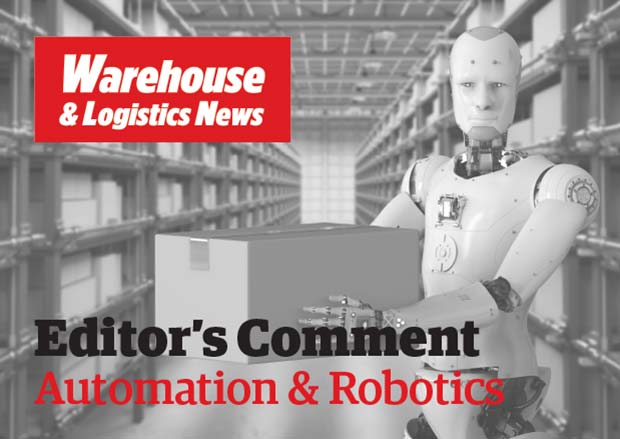Online shopping rates continue to surge, growing 129% week-on-week in UK and Europe in April, according to research from Astound Commerce – and it is rapidly shifting customer expectations of what they get from ecommerce. Terry Hunter, Managing Director of Astound Commerce UK, comments: “It’s clear that digital commerce will drive future revenues. That was the trend before Covid-19, and the virus will only accelerate the process as the strain on brick-and-mortar grows.” To meet consumer demand for e-commerce, warehouses need automation and robotics.
This article was first published in the August 1st 2020 issue of Warehouse & Logistics News, subscribe to the magazine by clicking here.
 “For busy warehouses and distribution centres, robotic automation has been shown to deliver a demonstrable return on investment through increased efficiency, higher throughput combined with improved accuracy – and hence, fewer returns and improved customer satisfaction,” says Nigel Platt, Lead Business Manager of ABB Robotics UK and Ireland. It also offers flexibility as a way of future-proofing logistics operations against changes, not only in the level of demand but also in the form it takes and the channels it uses. Robots can help make inefficient, imprecise and potentially unsafe manual routines efficient, reliably precise and much safer. They offer no limits on the number of shifts that can be worked.
“For busy warehouses and distribution centres, robotic automation has been shown to deliver a demonstrable return on investment through increased efficiency, higher throughput combined with improved accuracy – and hence, fewer returns and improved customer satisfaction,” says Nigel Platt, Lead Business Manager of ABB Robotics UK and Ireland. It also offers flexibility as a way of future-proofing logistics operations against changes, not only in the level of demand but also in the form it takes and the channels it uses. Robots can help make inefficient, imprecise and potentially unsafe manual routines efficient, reliably precise and much safer. They offer no limits on the number of shifts that can be worked.
Automated robots have also demonstrated some clear and positive impacts on scalability, according to 6 River Systems. They can be rented, transferred among facilities and brought online quickly to adapt to changing needs, providing necessary scalability in the modern warehousing world. Collaborative mobile robots have been designed to leverage AI and machine learning, allowing the systems to make data-driven decisions in real-time. By guiding associates from task to task and optimising picking routes, automated robots allow associates to handle several tasks during one walking trip on the floor, thereby accomplishing more in less time. It also reduces steps between tasks and makes streamlines pick paths, reducing unnecessary walking.
Interoll has complemented its Modular Pallet Conveyor Platform with a new stacker crane and transfer car. “With our compact automation platform, users can replace cost- and accident-prone forklift truck traffic and take advantage of new high-throughput pallet applications through the flexible combination of our modular conveyor and flow storage systems,” explains Michael Kuhn, Managing Director of Interroll Kronau GmbH.
Online supermarket Picnic has chosen material handling solutions supplier TGW Logistics Group as partner for its fully robotized fulfillment centre in the Netherlands. The online supermarket will use a FlashPick system, which is powerful but flexible at the same time, with three temperature zones and a shuttle system at the core of the solution. The core automation element is a shuttle warehouse comprising almost 40 aisles and more than 200,000 storage locations. The system also includes an energy-efficient KingDrive conveyor network, as well as highly ergonomic PickCenter One picking workstations.
The demand for automation in the distribution sector is only set to increase. Robots and other automated machines are getting cheaper. They also meet the two biggest challenges facing the sector: the growth of e-commerce and the shortage of labour.




Comments are closed.